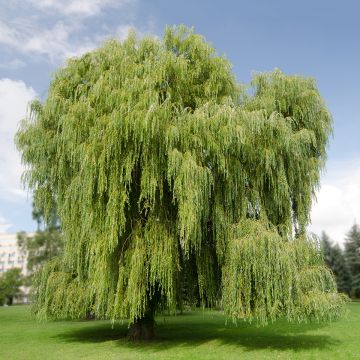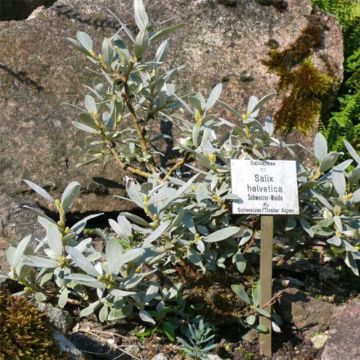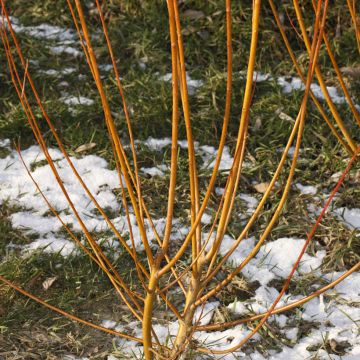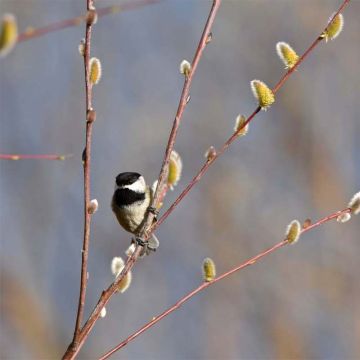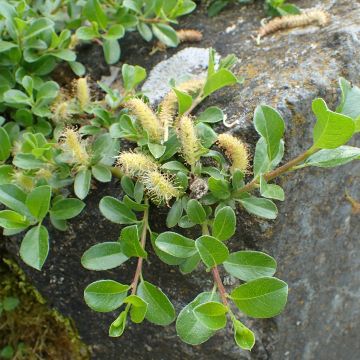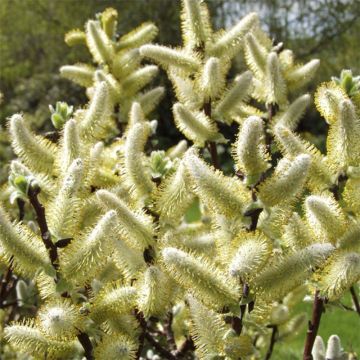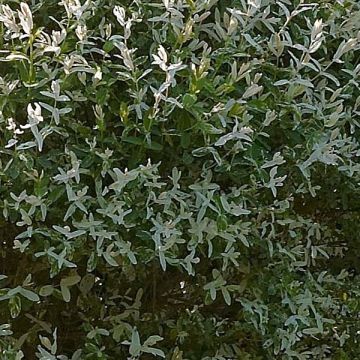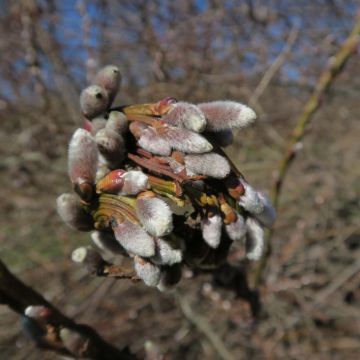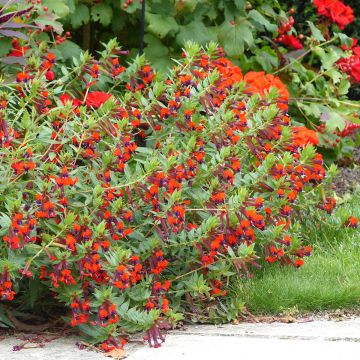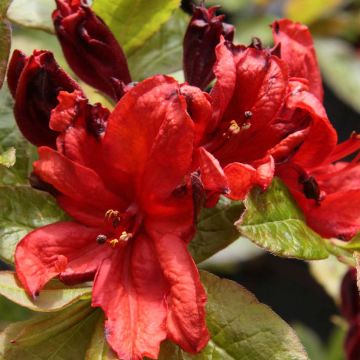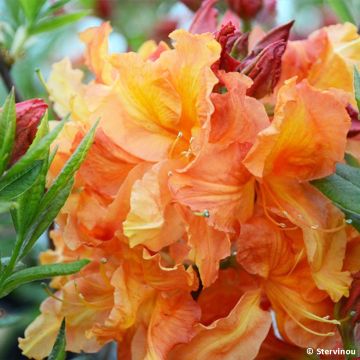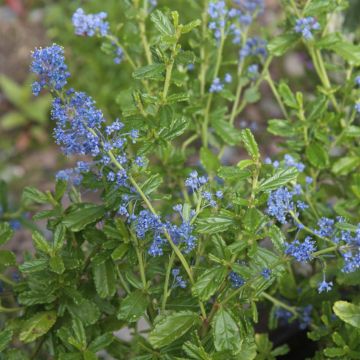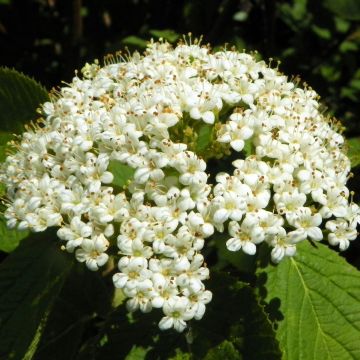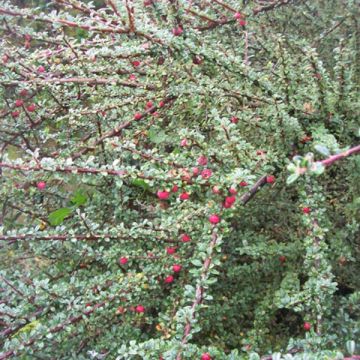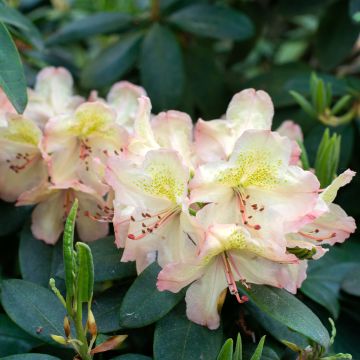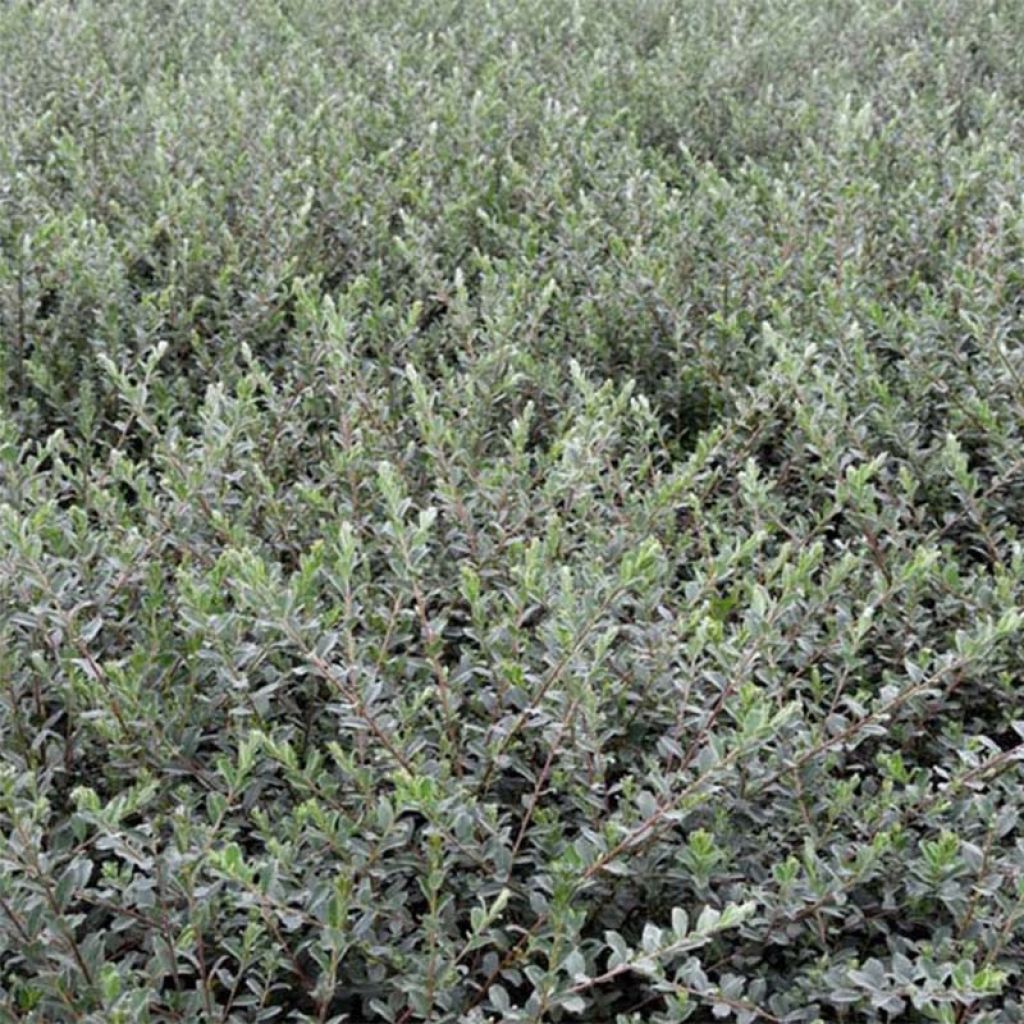

Salix repens var. nitida - Creeping Willow
Salix repens var. nitida - Creeping Willow
Salix repens Nitida
Creeping Willow, Sand Willow
This plant carries a 24 months recovery warranty
More information
We guarantee the quality of our plants for a full growing cycle, and will replace at our expense any plant that fails to recover under normal climatic and planting conditions.
From €5.90 for pickup delivery and €6.90 for home delivery
Express home delivery from €8.90.
Delivery to Corse prohibited: UE law prohibits the import of this plant from mainland France to Corse as part of the fight against Xylella fastidiosa. Please accept our sincere apologies.
More information
Does this plant fit my garden?
Set up your Plantfit profile →
Description
Salix repens var. nitida is a variety of creeping willow with very limited growth, highly ornamental with its beautiful semi-weeping bird's nest habit and its small foliage covered with silvery and shiny down in spring, turning grey in summer. The flowering in April, in the form of small silky catkins turning yellow at maturity, occurs just before or at the same time as the appearance of the leaves.This deciduous shrub is a very versatile plant in the garden: it forms an excellent ground cover for slopes, allows for beautiful pots for the terrace and bright low hedges almost maintenance-free, alone or mixed with other shrubs. Comfortable in heavy, moist to wet and slightly acidic soils, this small willow also tolerates drier conditions.
Salix repens belongs to the willow family. It is a botanical species with creeping underground stems, native to a large part of Europe and temperate Asia. This willow grows naturally on dunes, in wet heathlands and sphagnum bogs. It is also found in medium mountain meadows, up to 1700m (5577ft) altitude, always on acidic soil. The dwarf 'nitida' variant, is distinguished by a particularly dense, bushy, spreading habit, supported by flexible branches, erect at the base, trailing at their ends.
When mature, this small willow with fairly slow growth will not exceed 60cm (23.6in) in height and 75cm (29.5in) in spread, slowly expanding through suckers. The young branches are almost smooth, then become grey-brown and downy with age. The deciduous foliage is composed of small leaves arranged alternately. The young leaves are covered with extremely shiny silvery down on both sides. The adult leaves, entire, ovate to oblong in shape, measure 1.50 to 2.5cm (0.6 to 1in) long. The lamina is grey-green, downy, while the underside is lighter in colour, covered with silvery bristles and traversed by discreet veins. The flowering takes place from March to May, usually before the appearance of the leaves, sometimes at the same time depending on the climate. Male and female subjects are separate individuals, as with all willows. In this variety, the small oval, dense catkins measure about 1.5cm (0.6in) long. They are initially silver-grey, then yellow when all the flowers have opened, browner at the top on male catkins. The fruit, of variable colour and appearance, is a capsule sometimes very cottony that releases decorative seeds covered with long bristles.
This small silvery willow offers a variety of uses according to each gardener's taste. It easily fits into a small garden or in a large pot on the terrace where one can enjoy its superb foliage up close. Slightly trailing and suckering, it forms a lovely ground cover at the edge of flower beds, near water features. but also on drier slopes as long as the soil is deep and retains moisture. It can also be used in rockeries or for the creation of low hedges and rustic hedges requiring little maintenance, alone or in the company of dwarf purple barberry, dwarf forsythias, dwarf Russian almond (Prunus tenella) or dwarf ornamental apple tree (Malus 'Pom Zai') to animate a slightly wild area of the garden. Prune it regularly after flowering to encourage it to thicken and produce numerous flowering branches. For example, it can be associated with dogwoods (Cornus sanguinea, Cornus sericea), Miscanthus, gorse or reed mace at the edge of a large pond.
There is such a diversity of forms, sizes and cultivation requirements among willows that it is impossible not to find among them a subject that will thrive in your garden. A willow always brings a bucolic and natural touch, sometimes very original, romantic or elegant depending on the varieties.
Note: In France, the Salix repens is a protected plant in Burgundy, Centre-Val de Loire and Ile de France.
Report an error about the product description
Salix repens var. nitida - Creeping Willow in pictures
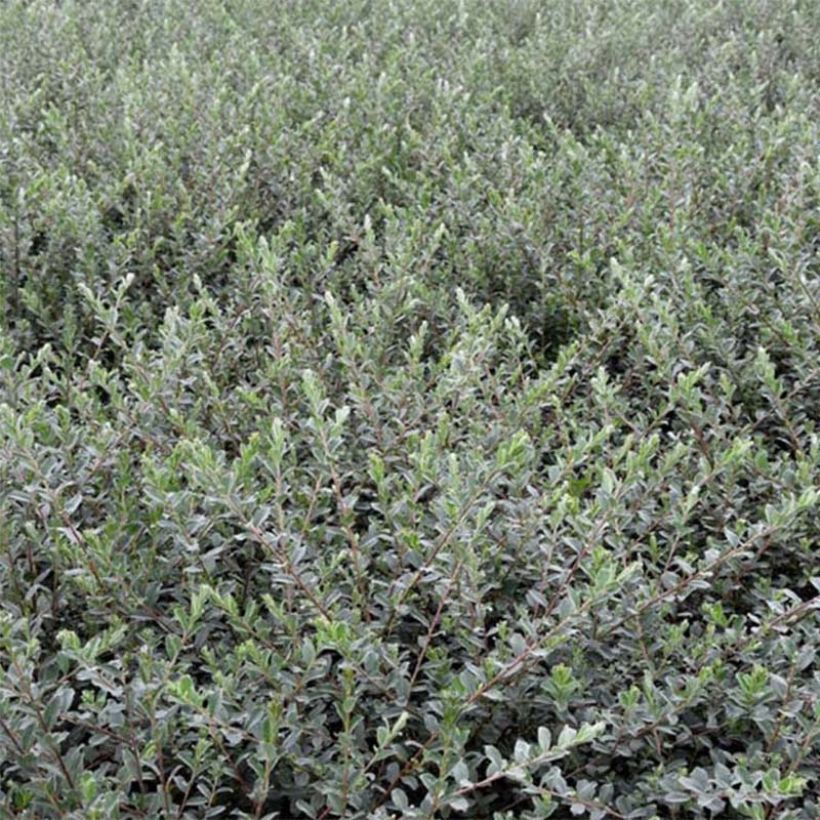

Plant habit
Flowering
Foliage
Botanical data
Salix
repens
Nitida
Salicaceae
Creeping Willow, Sand Willow
Cultivar or hybrid
Other Willow - Salix
Planting and care
Plant the Creeping Willow preferably in autumn, in a very sunny or semi-shaded position in a warm climate. It requires a fairly deep soil, preferably neutral to acidic, rich in clay, moist to wet, even waterlogged. However, it can tolerate drier soils as long as they retain some moisture at depth. Ideally, when planting, use a mixture composed of half turf or heath soil and half clayey garden soil mixed with coarse sand. It is perfectly resistant to cold and heavy frost. Pruning is not essential, but this bush tolerates it well, in late winter, before the vegetation resumes.
Planting period
Intended location
Care
This item has not been reviewed yet - be the first to leave a review about it.
Spring-flowering shrubs
Haven't found what you were looking for?
Hardiness is the lowest winter temperature a plant can endure without suffering serious damage or even dying. However, hardiness is affected by location (a sheltered area, such as a patio), protection (winter cover) and soil type (hardiness is improved by well-drained soil).

Photo Sharing Terms & Conditions
In order to encourage gardeners to interact and share their experiences, Promesse de fleurs offers various media enabling content to be uploaded onto its Site - in particular via the ‘Photo sharing’ module.
The User agrees to refrain from:
- Posting any content that is illegal, prejudicial, insulting, racist, inciteful to hatred, revisionist, contrary to public decency, that infringes on privacy or on the privacy rights of third parties, in particular the publicity rights of persons and goods, intellectual property rights, or the right to privacy.
- Submitting content on behalf of a third party;
- Impersonate the identity of a third party and/or publish any personal information about a third party;
In general, the User undertakes to refrain from any unethical behaviour.
All Content (in particular text, comments, files, images, photos, videos, creative works, etc.), which may be subject to property or intellectual property rights, image or other private rights, shall remain the property of the User, subject to the limited rights granted by the terms of the licence granted by Promesse de fleurs as stated below. Users are at liberty to publish or not to publish such Content on the Site, notably via the ‘Photo Sharing’ facility, and accept that this Content shall be made public and freely accessible, notably on the Internet.
Users further acknowledge, undertake to have ,and guarantee that they hold all necessary rights and permissions to publish such material on the Site, in particular with regard to the legislation in force pertaining to any privacy, property, intellectual property, image, or contractual rights, or rights of any other nature. By publishing such Content on the Site, Users acknowledge accepting full liability as publishers of the Content within the meaning of the law, and grant Promesse de fleurs, free of charge, an inclusive, worldwide licence for the said Content for the entire duration of its publication, including all reproduction, representation, up/downloading, displaying, performing, transmission, and storage rights.
Users also grant permission for their name to be linked to the Content and accept that this link may not always be made available.
By engaging in posting material, Users consent to their Content becoming automatically accessible on the Internet, in particular on other sites and/or blogs and/or web pages of the Promesse de fleurs site, including in particular social pages and the Promesse de fleurs catalogue.
Users may secure the removal of entrusted content free of charge by issuing a simple request via our contact form.
The flowering period indicated on our website applies to countries and regions located in USDA zone 8 (France, the United Kingdom, Ireland, the Netherlands, etc.)
It will vary according to where you live:
- In zones 9 to 10 (Italy, Spain, Greece, etc.), flowering will occur about 2 to 4 weeks earlier.
- In zones 6 to 7 (Germany, Poland, Slovenia, and lower mountainous regions), flowering will be delayed by 2 to 3 weeks.
- In zone 5 (Central Europe, Scandinavia), blooming will be delayed by 3 to 5 weeks.
In temperate climates, pruning of spring-flowering shrubs (forsythia, spireas, etc.) should be done just after flowering.
Pruning of summer-flowering shrubs (Indian Lilac, Perovskia, etc.) can be done in winter or spring.
In cold regions as well as with frost-sensitive plants, avoid pruning too early when severe frosts may still occur.
The planting period indicated on our website applies to countries and regions located in USDA zone 8 (France, United Kingdom, Ireland, Netherlands).
It will vary according to where you live:
- In Mediterranean zones (Marseille, Madrid, Milan, etc.), autumn and winter are the best planting periods.
- In continental zones (Strasbourg, Munich, Vienna, etc.), delay planting by 2 to 3 weeks in spring and bring it forward by 2 to 4 weeks in autumn.
- In mountainous regions (the Alps, Pyrenees, Carpathians, etc.), it is best to plant in late spring (May-June) or late summer (August-September).
The harvesting period indicated on our website applies to countries and regions in USDA zone 8 (France, England, Ireland, the Netherlands).
In colder areas (Scandinavia, Poland, Austria...) fruit and vegetable harvests are likely to be delayed by 3-4 weeks.
In warmer areas (Italy, Spain, Greece, etc.), harvesting will probably take place earlier, depending on weather conditions.
The sowing periods indicated on our website apply to countries and regions within USDA Zone 8 (France, UK, Ireland, Netherlands).
In colder areas (Scandinavia, Poland, Austria...), delay any outdoor sowing by 3-4 weeks, or sow under glass.
In warmer climes (Italy, Spain, Greece, etc.), bring outdoor sowing forward by a few weeks.

































